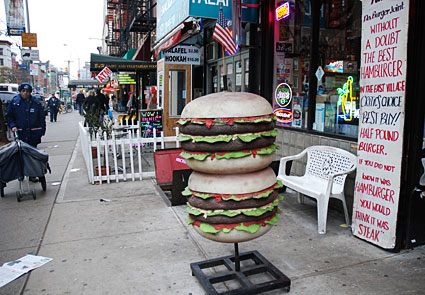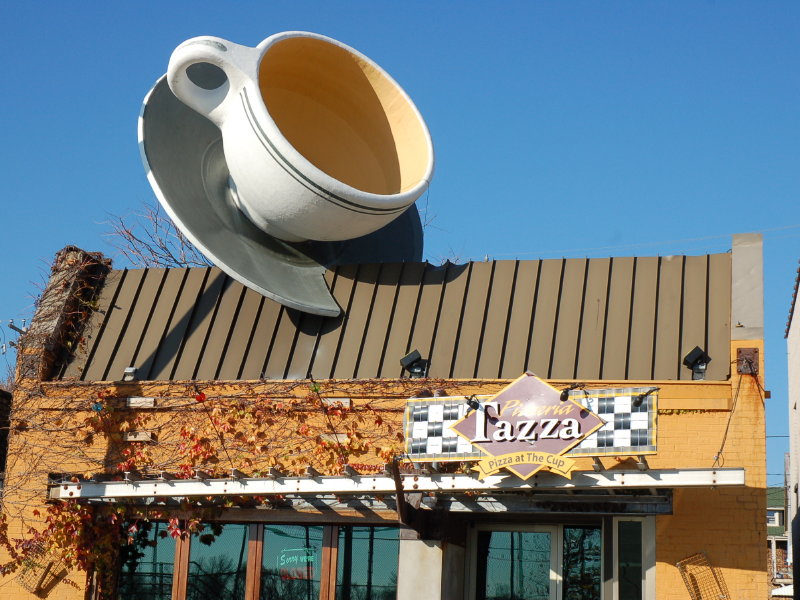It seems these days you can't step off your front porch without running head first into a "non-profit" organization. The website
urban.org reports that:
While the nation's gross domestic product grew by an inflation-adjusted 36.6 percent from 1994 to 2004, the nonprofit sector's revenues increased 61.5 percent, according to a new compendium of nonprofit facts from the Urban Institute's National Center for Charitable Statistics. The sector's expenses and assets grew at even faster pace: 62.6 and 90.7 percent, respectively.
And it is no wonder. The apparent perks for forming a non-profit are manifold. From
infotoday.com:
Historically, nonprofits have not been subjected to as much public scrutiny as for-profit institutions, without the same level of regulation. As the United Way states, "To a great extent, U.S. nonprofit organizations are answerable to no one but their board of directors."15 Until recently, few nonprofits have performed audits on their financial and other records.
Not only government regulation, but community support soars if you are a non-profit. Grocery store windows and coffee shop bulletin boards issue welcoming beacons for you to advertise your organization. Town billboards become available. Entry to events and fairs is very low or free. People work without being compensated for it, and if they are compensated, it is often far below minimum wage. How can you resist?
I'm always a bit puzzled when I ask someone what they do for a living, and they respond that they "work for a non-profit". It is as if all non-profits are the same, and what they are actually created to accomplish doesn't matter. They are enshrouded in the holy mantle of "non profit", a step just shy of sainthood, and suddenly expect people to bow at their feet. Sound business practices are tossed to the wind, and executive directors get salaries that are generated upon the backs of minions.
It really does seem to me to be a fetishist, if not cultist, mentality. Sure there are plenty of non-profits that do good things in their community. But there are plenty of for profit businesses that also do good things for a community. Like say... grocery stores, hardware stores, and auto mechanics. Businesses that serve the very basic needs of people.
This is coupled with the bizarre idea that if you work in the arts, you are somehow tainted if your goal is to actually earn a living; that is, unless you are the said director of one of these organizations, or otherwise manage to get yourself a payroll position that is rationalized as being "essential" to the organization. Seldom are the "essential" positions ones which include the boots on the ground execution of what the group professes to be its mission statement.
I mean on one hand, it is kind of cool. Say I want to start a company, but don't want the hassle of paying a bunch of employees. I can set myself up as a non-profit, wave my wand of "lofty goals", get a board of directors made up of my friends to support me, and suddenly I have doors open to me that would have been previously blocked. Try to accomplish the same lofty goals in a "for profit" business, and the red tape and "you are on your own" mentality kicks in.
It doesn't matter that the "for profit" business owner might be making 2/3 or less the income that he would have if he was the head of a non profit group. It doesn't matter that the business would actually be paying people to work instead of asking them to volunteer. It doesn't matter that the business would actually be supporting the people who work for it, instead of those people supporting it.
I have had the feeling when talking to many people who run non-profits that their brains have turned to mush. Turns head in denial at the idea of actually keeping track of man-hours involved in producing events. Hands wave and excuses flow as to why the group can't pay people to do things. That things in the organization can't change, because they've been this way for so long. Even when my position has been acknowledged as being rational, I've been labeled "quixotic". Tilting at windmills. Trying to topple invisible giants that lurk beyond the veil of
IRs form 990.
And all the while I see the casualties. The burnt out discards of people who have devoted countless hours to this or that organization, often simply because that organization is a "non-profit". The people who can't pay their bills. That have cars that are barely operable.
Oh, don't confuse these with the people who make their life's hobby out of helping out non-profits. The people who don't need the money, because they have other revenue sources. The people who cheerfully and tirelessly show up at events, never worrying how they are going to pay for that dental bill.
We are living in a world made up of 60 year old conceits. A model based on clubs formed to give women a way to be productive because their reputation would be tainted if they actually worked for money. A model forged during a snapshot of time in a post-industrial, pre-liberation age, that somehow decided that working for money was beneath the dignity of half the population.
But that half of the population did eventually return to proudly working for money, just as it had always done in the centuries and millennia prior to that little snapshot of time. Yet the concept of the "non profit" remained, with fewer and fewer people available to fill the shoes of those who came before.
What was once a productive use of otherwise idle time, became something to do in addition to working full time. Or it became a replacement for paying labor. Why pay someone to do a job when you can get them to do if for free?
This mentality is compounded with the current day fetish for interns. Once upon a time, an apprentice was given food and board for their commitment to learning a trade, and if he got sick he would be taken care of. In other words, a living wage. The equivalent of enough money to put a roof over your head and eat, and pay the bills for the things like electricity, water, a car, and gas and health insurance that are required to accomplish those few things. These days, being an intern is an excuse to try to get someone to work for nothing. Sure it is in violation of IRS regulations, but we all seem to be turning a blind eye to such things.
I'm convinced that the difficulties with our economy are compounded by the proliferation of non-profits.
- Hospitals and other health care organizations, 12.9 percent of all reporting public charities, accounted for 58.7 percent of the sector's revenues in 2004, 41.1 percent of its assets, and 60.0 percent of its expenses, dominating each category.
- Colleges and other higher education nonprofits, less than 1 percent of reporting public charities, received 11.6 percent of the sector's revenue, controlled 22.3 percent of its assets, and recorded 10.9 percent of its expenses.
- Human service organizations, 34.5 percent of reporting public charities, had only 13.6 percent of the sector's revenues, 11.5 percent of its assets, and 14.0 percent of its expenses.
And this:
- Twenty-nine percent of Americans volunteered with a nonprofit in 2005.
Add the non-paying or below minimum wage jobs for interns to that twenty-nine percent and you've got one hell of a lot of people working for nothing. And that doesn't count those doing contract work for non-profits that get paid below minimum wage.
Not only are we shipping jobs overseas, but we are creating an ever increasing mentality that working for nothing is a good thing. Or at least "the way things are".

























